The iPhone XS & XS Max Review: Unveiling the Silicon Secrets
by Andrei Frumusanu on October 5, 2018 8:00 AM EST- Posted in
- Mobile
- Apple
- Smartphones
- iPhone XS
- iPhone XS Max
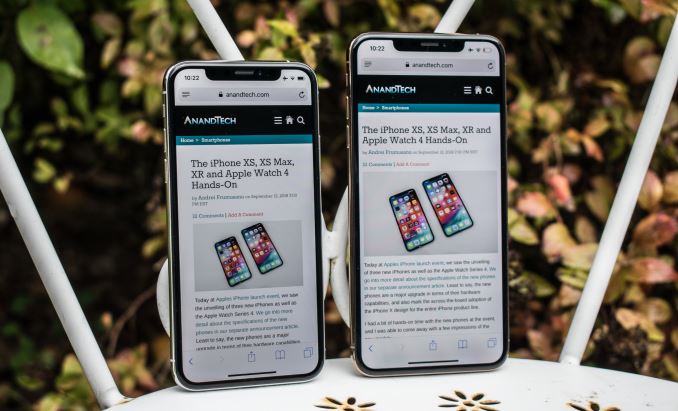
It’s been a little over three weeks since Apple unveiled the new iPhone XS, XS Max and the XR. The new flagship line-up is one of Apple’s most important ones to date; this year we’re seeing the company expand last year’s new iPhone X design across all of its new models, meaning big changes for all users. 2018 has been an odd year for the smartphone market as more than ever before we saw the competition try to react and also mimic the iPhone X – the design language especially has been something that we saw replicated across a lot of various designs.
Instead of iterating on the design, Apple has stayed true to its “S” generation release tradition and doubled down on what we saw last year with the iPhone X, all the while expanding the design across new form-factor phones as well. Today we review the first two of this year’s three new models: the iPhone XS, and its bigger brother the iPhone XS Max. The iPhone XR unfortunately releases later on this month – so we'll be taking a look at it separately.
Today we’ll be going into the detail of all aspects of the phone, included a much awaited deep dive of the new A12 SoC. Given Apple's ever-growing focus on the camera capabilities of their phones, I have also prepared an extensive camera comparison for this review – comparing shots across different modes on 14 devices. Hang in tight, this is a long one.
Starting off, let’s go over the specifications of the new iPhone XS and XS Max:
| Apple 2018 iPhone XS Specifications | |||
| iPhone XS | iPhone XS Max | ||
| SoC | Apple A12 Bionic 2 × Vortex @ 2.5GHz 4 × Tempest @ 1.59GHz |
||
| GPU | 4-core "G11P" @ >~1.1GHz | ||
| DRAM | 4GB LPDDR4X | ||
| Display | 5.8-inch OLED 2436×1125 DCI-P3/True Tone 625 cd/m² brightness 1M:1 contrast ratio 3D Touch |
6.5-inch OLED 2688×1242 DCI-P3/True Tone 625 cd/m² brightness 1M:1 contrast ratio 3D Touch |
|
| Size | Height | 143.6 mm | 157.5 mm |
| Width | 70.9 mm | 77.4 mm | |
| Depth | 7.7 mm | 7.7 mm | |
| Weight | 177 grams | 208 grams | |
| Battery Capacity | 2658mAh / 10.13Wh | 3174mAh / 12.08Wh | |
| Wireless Charging | Qi | ||
| Rear Cameras | 12 MP 1.4µm pixels, f/1.8, OIS Wide Color Gamut Quad LED True Tone Flash Portrait Mode, Portrait Lighting, Depth Control |
||
| 12 MP f/2.4 Telephoto, OIS 2x Optical Zoom Portrait Mode, Portrait Lighting, Depth Control |
|||
| Front Camera | 7MP f/2.2 Wide Gamut, Retina Flash, Portrait Mode, Portrait Lighting, Depth Control |
||
| Storage | 64 GB 256 GB 512 GB |
64 GB 256 GB 512 GB |
|
| I/O | Apple Lightning | ||
| Wireless (local) | 802.11ac Wi-Fi with 2x2 MIMO + Bluetooth 5.0 + NFC | ||
| Cellular | Intel XMM7560 Modem UE Category 16 LTE (1Gbps) with 4x4 MIMO and LAA |
||
| Splash, Water, Dust Resistance | IP68 up to 2 meters, up to 30 minutes |
||
| Dual-SIM | nano-SIM + eSIM nano-SIM + nano-SIM (China model) |
||
| Launch Price | 64 GB: $999 256 GB: $1149 512 GB: $1349 |
64 GB: $1099 256 GB: $1249 512 GB: $1449 |
|
At the heart of the new iPhones is the brand new Apple A12 SoC. The new chipset is the very first consumer piece of silicon that is being manufactured on TSMC’s new 7nm process. The new process promises greater transistor density and reduced die area of the chip, which gives Apple the ability to cram in more transistors in the same area, ultimately increasing the complexity and capabilities of the new SoC. We’ll go into more detail about the process node in a dedicated section, but least to say, in terms of sheer transistor counts it’s a healthy jump for Apple’s newest design.
The SoC’s CPU complex is now powered by two new “Vortex” CPU cores running at up to 2.5GHz, providing new levels of high performance. Apple claims the new CPUs perform around 15% better than last year’s A11 Monsoon cores – here it seems the company’s marketing was a tad conservative as the real performance figures of the new CPU are significantly higher. Alongside the performant Vortex cores, we see four new smaller efficiency cores named “Tempest”. The new small cores bring some performance improvements, but it’s mostly in terms on power and power efficiency where we see Tempest make some bigger leaps.
The A12’s GPU is the G11P – here Apple has made the biggest performance claims, advertising up to 50% higher figures. We’ll see how the new successor to last year’s A11 GPU in its dedicated section.
On the memory and storage side of things, we now finally see a significant boost in main memory capacity, as both the iPhone XS and XS Max sport 4GB of LPDDR4X RAM, up from 2GB and 3GB in the iPhone 8/X family. In terms of storage capacity, the new models come in 64, 256 and 512GB tiers. Here it’s a tad disappointing to see the base model come in at only 64GB, I think offering 128GB would have resulted in a much more even distribution in the models.
Front and centre of the new iPhones is the new “Super Retina” OLED display. Apple first introduced OLED displays in its lineup in the iPhone X – and the new iPhone XS and XS Max are a continuation of that panel, with an obviously bigger iteration for the Max. The displays are outright fantastic and among the best in the market, offering a fully colour managed wide "Display P3" gamut, very high brightness up to 650 cd/m², and excellent viewing angles. The iPhone XS has the same resolution as last year’s iPhone X, at 2436 x 1125 pixels, while the XS Max maintains the same pixel density by increasing the pixel count to 2688 x 1242.
On the back side, both phones are again a continuation of the iPhone X design. The glass back offers NFC and wireless charging capabilities. Wireless charging has seen an upgrade and claims to be able to charge faster, and also improve on the off-centre and off-axis charging performance.
Apple has worked with Corning to create a new formulation that is said to improve durability and scratch resistance. I’ll leave the testing of this to other people!
The sides of the phones come in highly glossy “surgical grade” steel. While I do appreciate Apple’s intent here, and I understand some people have personal preferences, I’m not a big fan of such finishes as I find them impractical and more slippery than the anodised aluminium of previous generation iPhones. It’s also a hell of a fingerprint magnet.
While the iPhone XS is more or less indistinguishable from the iPhone X – the one visual difference between the new and old is found in the lower left and upper right corners. The left microphone grill has halved its size and is only three holes wide now. Here Apple has introduced two new antenna cut-outs in the corners that serve the two new cellular antennas which enable the iPhone XS’ to achieve 4x4 MIMO.
Indeed in terms of cellular connectivity, the new iPhones boast a significant jump as we’ve seen an upgrade in download speeds to a gigabit for LTE networks. In terms of internals, this was achieved by now exclusively adopting Intel’s new XMM7560 baseband platform. This is Intel’s first chipset to support CDMA and also the first modem to be manufactured on Intel’s own 14nm process.
On the camera side of things we see the same dual 12MP camera module configuration as on the iPhone X – a normal wide angle and a zoom lens. The big difference with the XS is the upgrade in sensor size from an area of 32.8mm² to 40.6mm². Because the lens has remained the same and also offers the same f/1.8 aperture, the increase of the sensor size results in a slightly wider field of view than last year’s models. Light sensitivity has been increased thanks to the bigger sensor, and hence, the bigger pixels, increasing in size from 1.22µm to 1.4µm. The telephoto lens remains largely similar, with a 12MP 2x zoom module.
The iPhone XS Max in contrast to the iPhone XS is just a much bigger device. Apple noted that it’s calling it the “Max” instead of the “Plus” denomination, because it has no added features, and is just a bigger variant of the smaller XS. Here I applaud Apple for not making any feature discrepancies based on the model size – something I really hated in the past with the dual camera being found only on the Plus models.
The iPhone XS Max has a 3174mAh/12.08Wh battery while the smaller XS features a 2658mAh/10.13Wh battery. While Apple calls this the biggest battery ever in an iPhone, and that’s true, Apple is still a tad behind the battery densities that Android manufacturers have now come to commonly use in larger form factor phones.
Again, in a comparison between the iPhone X and the new iPhone XS – you’ll be hard pressed to see the difference and you’ll really have to focus to find the new antenna cut-outs to tell them apart.
Meanwhile the iPhone XS Max is largely the same form-factor as the iPhone 8 Plus, although the Max is technically 0.7mm narrower and 0.9mm shorter. For users opting for the larger models, the biggest difference is of course the massive increase in screen size, and I have to say, the XS Max does look very good due to its sheer screen-to-body ratio, which is higher than the smaller XS.
Finally the last big mention before we go deep into our review the price of the new phones. These new models are not successors to the iPhone 8 and 8 Plus – something I imagine the iPhone XR will have much more success in achieving – but rather continuation of the new high price points of the iPhone X. The higher storage capacity price points in particular are exceptional, coming in at $1349 for the XS and $1449 for the XS Max. If the price is worth it for you, is something you best decide along with us as we go deeper into the hardware of the new phones.



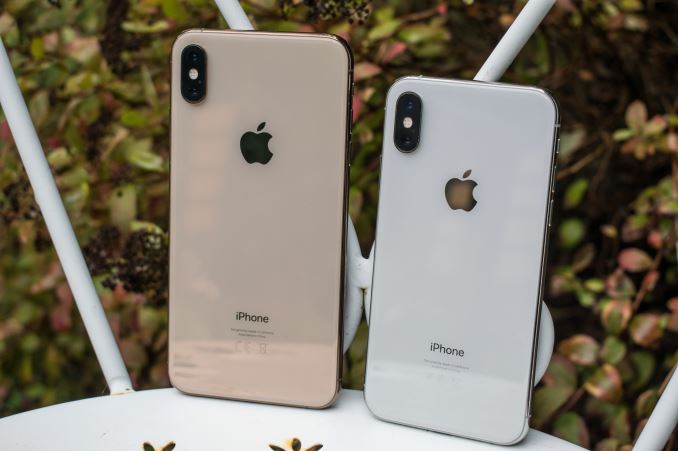

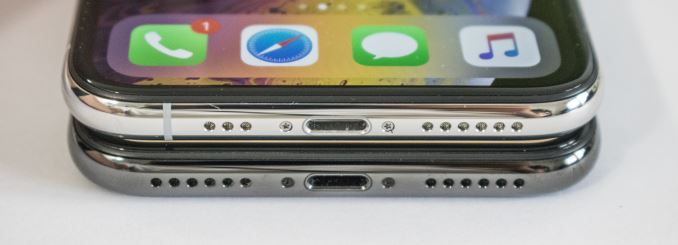
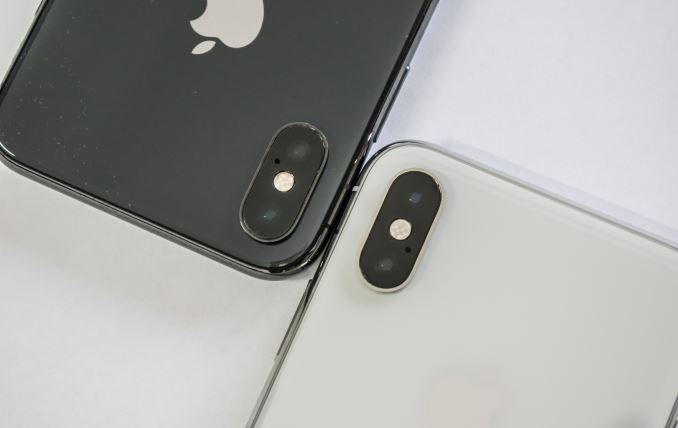
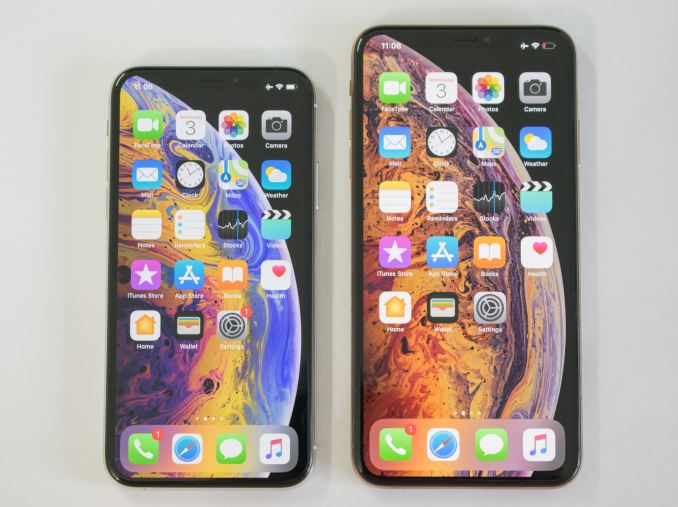
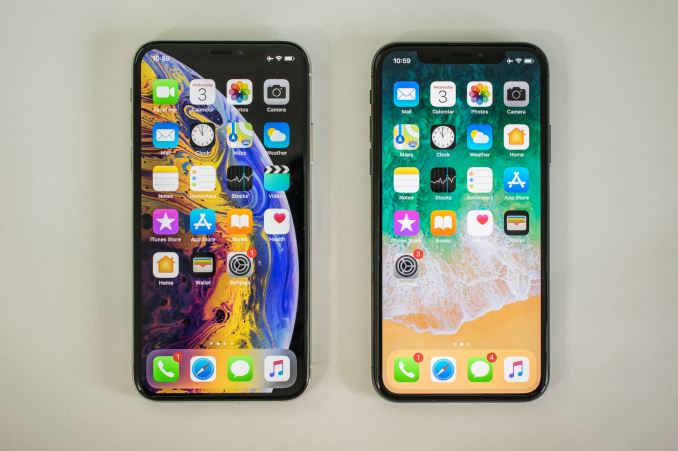
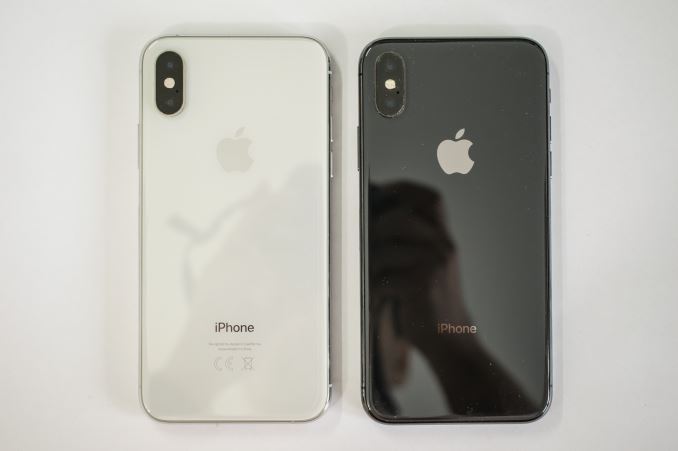
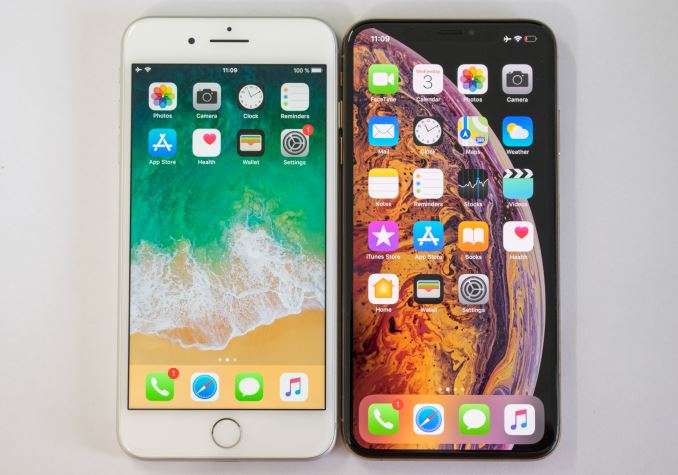
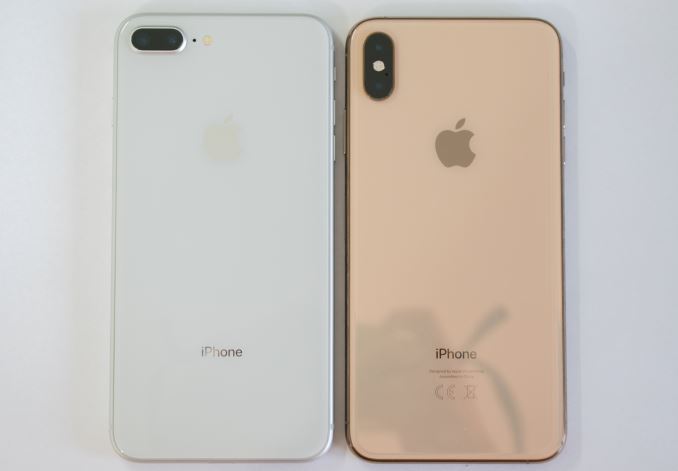








253 Comments
View All Comments
eastcoast_pete - Sunday, October 7, 2018 - link
Apple's strength (supremacy) in the performance of their SoCs really lies in the fine-tuned match of apps and especially low-level software that make good use of excellent hardware. What happens when that doesn't happen was outlined in detail by Andrei in his reviews of Samsung's Mongoose M3 SoC - to use a famous line from a movie that "could've been a contender", but really isn't. Apple's tight integration is the key factor that a more open ecosytem (Android) has a hard time matching; however, Google and (especially) Qualcomm leave a lot of possible performance improvements on the table by really poor collaboration; for example, GPU-assisted computing is AWOL for Android - not a smart move when you try to compete against Apple.varase - Tuesday, October 23, 2018 - link
I have serious doubts that Android would even run on an A12 SoC - I thought Apple trashed ARMv7 when it went to A11.Strafeb - Saturday, October 6, 2018 - link
It would be interesting to see comparison of screen efficiency of iPhone XR's low res LCD screen, and also some of LG's pOLED screens like in V40.Alistair - Saturday, October 6, 2018 - link
The Xeon Platinum 8176 is a 28 core, $9000 Intel server CPU, based on Skylake. In single threaded performance, the iPhone XS outperforms it by 12 percent for integers, despite its lower clock speed. If the iPhone were to run at 3.8ghz, the Apple A12 would outperform Intel's CPU by 64 percent on average for integer tests.iPhone XS and A12 numbers from: https://www.anandtech.com/show/13392/the-iphone-xs...
Xeon numbers from: https://www.anandtech.com/show/12694/assessing-cav...
spreadsheet: https://docs.google.com/spreadsheets/d/1ipKIh4i56o...
image of chart: https://i.imgur.com/IAupi9p.jpg
Think about that, the iPhone's CPU IPC (performance per clock) is already higher in integer performance now. Those tests include: spam filter, compression, compiling, vehicle scheduling, game ai, protein seq. analyses, chess, quantum simulation, video encoding, network sim, pathfinding, and xml processing. Test takes hours to run.
SanX - Saturday, October 6, 2018 - link
Yes, and while Apple and all other mobile processor manufacturers charge $5 per core, Intel $300yeeeeman - Saturday, October 6, 2018 - link
It might be faster in single thread, but in MT it gets toasted by the Xeon. The Xeon is 9000$ for a few reasons:- it is an enterprise chip;
- it supports ecc;
- it supports up to 8 cpus on a board;
- it supports tons of ram, a LOT of memory channels;
- it has almost 40MB of L3 cache, compared to 8mb in a12;
- it has a ring bus architecture meaning all those cores have very low latency between them and to memory;
- it has CISC instructions, meaning that when you get out of basic phone apps and you start doing scientific/database/HPC stuff, you will see a lot of benefits and performance improvements from executing a single instruction for a specific operation, compared to the RISC nature of A12;
- it supports AVX512, needed for high performance computing. In this, the A12 would get smashed;
- and many more;
So the Xeon 8180 is still an mighty impressive chip and Intel has invested some real thought and experience into making it. Things that Apple doesn't have.
I get it, it is nice to see Apple having a chip with this much compute power in such a low TDP and it is due to the fact that x86 chips have a lot of extra stuff added in for legacy. But don't get carried away with this, what Apple is doing now from uArch point of view is not new. Desktop chip have had this stuff 15 years ago. The difference is that Apple works on the latest fabrication process and doesn't care about x86 legacy.
Alistair - Saturday, October 6, 2018 - link
"It might be faster in single thread, but in MT it gets toasted by the Xeon"That is totally irrelevant. Obviously Apple could easily make a chip with more cores. Just like Cavium's Thunder. 8 x A12 Vortex cores would beat an 8 core Xeon in integer calculations easily enough.
eastcoast_pete - Sunday, October 7, 2018 - link
Agree on your points re. the XEON. However, I'd still like to see Apple launch CPUs/iGPUs based on their design especially in the laptop space, where Intel still rules and charges premium prices. If nothing else, Apple getting into that game would fan the flames under Intel's chair that AMD is trying to kindle (started to work for desktop CPUs). In the end, we all benefit if Chipzilla either gets off its enormous bottom(line) and innovates more, or gets pushed to the side by superior tech. So, even as a non-Apple user: go Apple, go!Constructor - Sunday, October 7, 2018 - link
CISC instructions generally don't really do much more than RISC ones do – they just have more addressing modes while RISC is almost always register-to-register with separate Load & Store.
That just doesn' make any difference any more because the bottleneck is not instruction fetching (as it once was in the old times) but actually execution unit pipeline congestion, including of the Load & Store units.
There's already a scalable vector extention for ARM which Apple could adopt if that was actually a bottleneck. And even the existing vector units aren't anything to scoff at – the issue is more that Intel CPUs are forced to drop down to half their nominal clock once you actually use AVX512; It could actually be more efficient to optimize the regular vetor units for ful lspeed operation to make up for it.
We actually have no clue what Apple is investing in behind closed doors until they slam it on the table as a finished product ready for sale!
tipoo - Thursday, October 18, 2018 - link
I'm hoping Apple takes the ARM switch as an opportunity to bring an ARM AVX-512 equivalent down to more products, like the iMac.